When it cleared
Posted: October 6, 2012 Filed under: ink, Montreal, suburban, watercolour 26 CommentsI went out today with the intention of trying two new purchases. One was a Raphael #8 watercolour brush (I’ll admit I have a weakness for these sable brushes!) and the other was a different format Moleskine sketchbook.
The brush, as expected, was wonderful. I already have a #14 from the same series but sometimes that is a little too big so I spotted a sale at one of my online suppliers, I jumped on it. The added incentive was that the brush came with free #2 and #0 brushes.
I’ve painted in many Moleskine books but they’ve always been watercolour paper. The new one I am trying is the Moleskine Sketchbook and I bought it because it is a vertical format instead of horizontal like the ones I am used to painting in. It’s listed in the online catalogue as “perfect for pencil, charcoal, fountain pen, tempera, acrylic, etc.” so I assumed it would be good for watercolour too, or at least light washes. Wrong! It is as if the paper has some type of resist on it and the wash just beaded and sat on top of the paper. My sketch in that book was of the same scene as this but it was very unsuccessful. I’ll have to do some more research into this to find out if other people have the same problem as me.
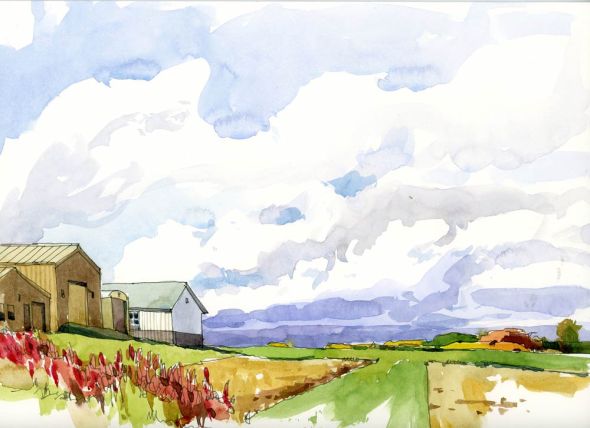
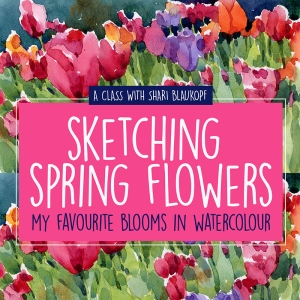

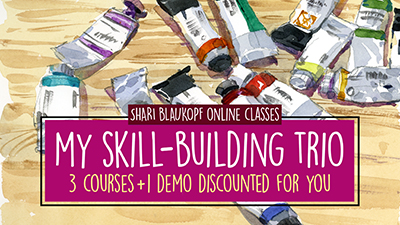
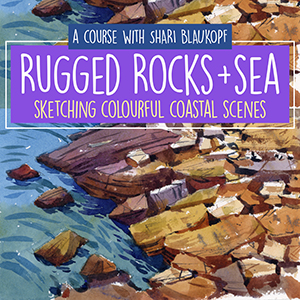


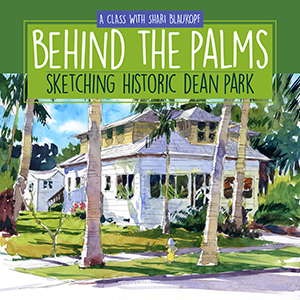

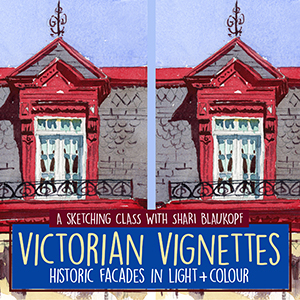
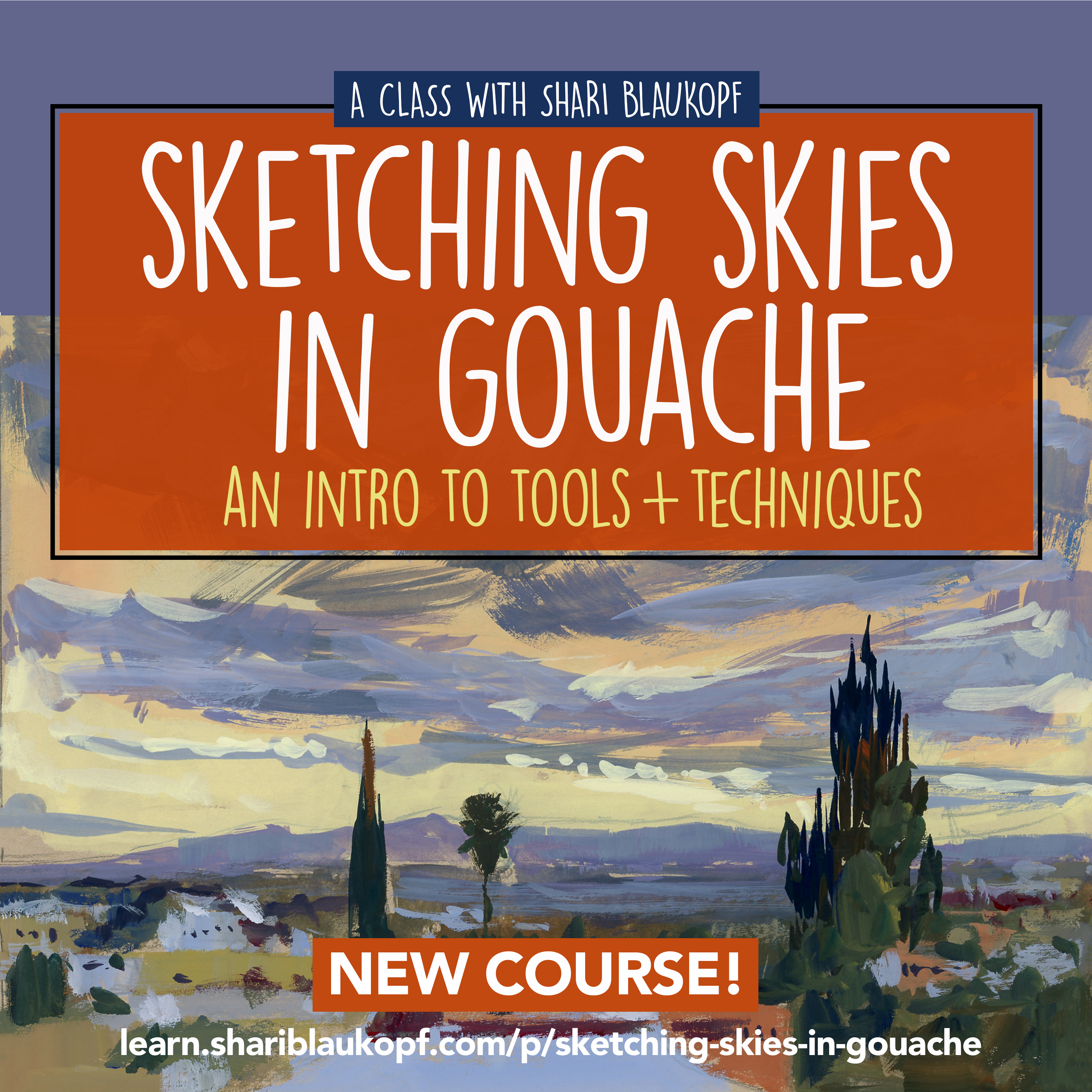
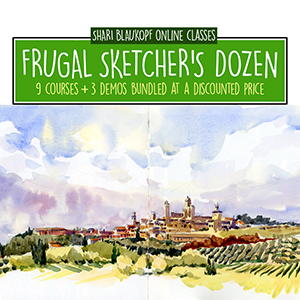

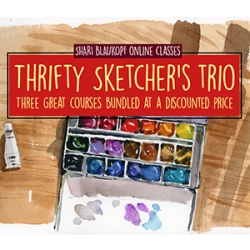
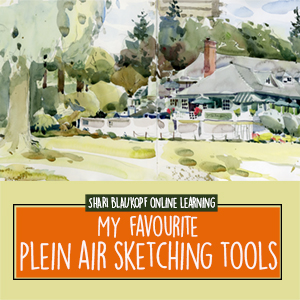

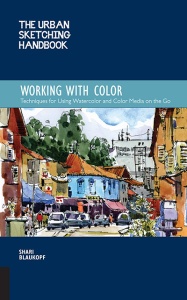
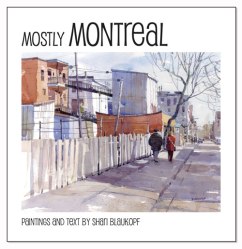


Glad to see that it finally worked for you today… with a good result!
So Shari, it didn’t occur to you, when it said “perfect for pencil, charcoal, fountain pen, tempera, acrylic, etc” that they may not have included watercolour for a reason? : )
LikeLike
I confess I only read that info after I tried to paint in it. But tempera and acrylic are water-based, albeit a bit thicker, so wouldn’t you think a bit of wash would work?
LikeLike
Yes, I would have expected it to take some wash as well.
Is the sketchbook with the yellowish pages? I have recently tried it with pencil and found it to be very responsive… I like the very smooth page finish and quickly became accustomed to the yellow colour. But, how were you intending to deal with the page colour when doing your colour work?
LikeLike
I love the smoothness of the paper for ink and pencil too and yes, it is the yellowish paper. I thought it might even be interesting to use a bit of white gouache on this for highlights. I am not sure how I will deal with colour but I did get some interesting responses to this post and if you read Monika’s links you will see how Wil Freeborn uses the paper. Do you know his work? He is so AMAZING! There is a link to his blog and he has work on Flickr too.
LikeLike
And if you look at his sketch of the red telephone box you will see clearly in the sky and the foreground the type of problems that I was having yesterday. He must really scrub the surface to get the paint to stick.
LikeLike
This is all far too much information to absorb in one day.
Have you ever noticed that you sometimes get more comments on your “failure” days than your good days? I have an idea… [Oh no! she groans]… Maybe you could start a separate blog for failures? : )
LikeLike
“Failure” days are always the best for comments. Especially “equipment failure” days because everyone can relate to those. And I like your idea of a second blog because I have a lot of spare time and don’t know how to fill it : )
LikeLike
I had the same experience some 10 years ago when I first tried that Sketchbook. It has a kind of impregnation that won´t let interact watercolour and paper. In consequence I tried other media – the description is quite precise. In acrylic applying a colour-water-mix you may find the point where the colour begins to roll off the paper. So using much colour and few water in watercolour also allows a quick colouring of your sketches. Anyway, the result has nothing to do with “watercolour” and I later used this sketchbook to play around for the surprising effects the impregnation produced.
A good opportunity to use a media of your assortment you usually don´t pick when setting out?
Best wishes from Spain, Shari =)
LikeLike
Thanks so much for that good advice Isabel. I will try tomorrow wilth less water and more paint and not try to go for big wash areas. I love the format of the book so I want to give it another chance.
LikeLike
Lovely sketch,Shari.
I also had difficulty with Moleskine sketchbooks.I have been wishing for years they would make a vertical journal with their WC paper.Watercolorists do paint things other than landscapes!
LikeLike
I agree Linda. That is why I tried the sketchbook format. I love the double page size. But this experience was a bit of a nightmare! Thanks for letting me know that I am not alone. Hope all is well with you!
LikeLike
Hi Shari, my first Moleskines were also of the Sketchbook variety, and it did annoy me too that I could not use them to play with watercolor. So to me, watercolor stayed a “expensive big paper sheets only” medium, which is actually quite a shame. I have only recently begun to carry the watercolor ones around with me.
Your post reminded of of someone who actually did find a way to make watercolour stay on those water-repellent pages, but I think his way of applying the colours is so much different from yours that you would be bending over backwards to do what he does (don’t do it, it’s not worth it!) 😉
I think the interview on The Tools Artists Use is fairly descriptive of his process:
http://thetoolsartistsuse.com/2009/05/wil-freeborn/
He also posted a blogpost on how he scans the images:
http://www.wilfreeborn.co.uk/?p=1705
LikeLike
Thank you for all this great info Monika. I have been admiring Wil Freeborn’s work for many months now and you have solved the mystery for me. I know he is very successful using these books and I know why he likes them but I see that he applies paint in a very different way than I do. He does admit that the paper is water repellent as well but he gets past that. The post about scanning was fascinating too.
Love your drawings, btw.
LikeLike
As have the others who have commented, I had the same experience. I tried a small painting in the smallest Moleskine sketchbook. Same result. So now it’s the sketchbook that’s in my totebag at all times but just for ink sketches. Thanks to Monika for the links to “Tools Artists Use” and Will Freeborn. I’ll probably start reading those blogs! It did just occur to me that one solution to the nonabsorbent nature of the Moleskine sketchbook paper would be to coat it with Daniel Smith’s watercolor ground http://www.danielsmith.com/Item–i-G-284-055oz It also comes in a larger size. That would be a lot of prep but it would make the sketchbook more useable.
LikeLike
Oh, just remembered this. For those willing to do all this work, or enjoy bookbinding, here’s a tutorial on “reloading” the Moleskine with watercolor paper!
http://www.trumpetvine.com/sketchblog/moleskine-reloaded/
LikeLike
I will have to have a look at this too. Thanks!
LikeLike
Thanks for the info Kate. I looked at that watercolour ground and wondered about it for fixing paintings. I wonder how would the Moleskine paper take ground itself? Maybe it would repel the ground too!
LikeLike
I have the same experience when I started out with Moleskine. Also my fountain-pens work horrible on that paper.
Regarding watercolour I solved it by first applying a bit of clear water from my waterbrush to the parts I wanted to paint, in order to moisten the paper up. Then wait something like a minute until it’s almost dry, then paint it. It has the advantage that the colours become very lively because the colour is not accepted evenly by the paper, you can achieve impressive results with that.
After a while I found that I liked using Derwent inktense pencils on this paper (familiar with those?); the tones come out better then on WC paper (in my opinion). But I gave up on these sketchbooks, I stick my Moly-WC’s, even if they are landscape.
Want an example of how you can use that paper to achieve effects? Check the drawings of carlos caminha: http://www.skineart.com/art/author/cauzi/
LikeLike
I just had a look at Carlos’ work and he’s quite incredible in medium, drawing skills and imagination. Sometimes it makes me wonder why outstanding artists want to work on a small moleskin sketch bk. at all because the beauty of the whole work of art is diminished by the crease in the middle. Shari, don’t you think it would be better to work on larger
paper to begin with?
LikeLike
That’s a good question Mary and one I ask myself all the time.
I can only answer with the reasons why I use the books:
1. Very portable and if you stand to draw like I do sometimes in busy places, the book format is easy because of the support you get from the back cover.
2. They become beautiful objects when they are finished. I have 12 of them sitting on my desk.
3. They are like journals, diaries, etc. in that they represent a period of time in your life.
I have been trying to work more on paper but I have to admit that I can’t get away from the books completely. I love them as objects and in Santo Domingo I also discovered that there is something wonderful about looking through other people’s sketchbooks too that is far more interesting and intimate than looking through a pile of sketches. And I met people there who would never work in anything other than a book.
LikeLike
Thanks for all that info René.
I am going to try to your idea of wetting the paper first. I had a feeling that might work because I did try a bit of that on my failure painting. But I need to explore that further.
I have not given up on my watercolour Moleskines, it’s just that I have done so many this past year that I am a bit fed up of the format.
I had a look at Carlos Caminha. He is amazing and he really makes that paper work for him. Thanks for that link!
LikeLike
I have been using this sketchbook since last May now but only for drawing and doing my value sketches. I did try using it with watercolours and the colour turned out very intense and almost unreal. I am so grateful to all of you for this post as now I am seeing it with new eyes. And yes the format is great! So I will continue drawing and painting with it then… such a great post Shari — thank you 😉
LikeLike
I am grateful to all the people who responded to this Jane. It has been such interesting reading for me. Glad it was for you too.
LikeLike
I’ve just resently found your blog while browsing for watercolor sites and I’m so glad I did, your work is wonderful and inspiring. It’s been so long since I’ve picked up a paint brush and looking at your work makes me feel that pull to draw and paint. Thank you
LikeLike
Thank you so much Lynn for your comments. They are truly appreciated. I hope you get out there with your paint brushes. Even 15 minutes of drawing every day can make a huge difference.
LikeLike
[…] Blaukopf wrote about notebooks in a comment to this post, “1. Very portable and if you stand to draw like I do sometimes in busy places, the book […]
LikeLike